#housesparrow
Photo

Scenes From My Walk - House Sparrow in a bush #PastPhotoFavorites #Sparrow #HouseSparrow #Sparrows #SpeakForSparrows #SparrowsOfInstagram #Birds #Bird #BirdPhotography #Birding #BirdingPhotography (at Agua Fria, New Mexico) https://www.instagram.com/p/CqYg48yO2qc/?igshid=NGJjMDIxMWI=
#pastphotofavorites#sparrow#housesparrow#sparrows#speakforsparrows#sparrowsofinstagram#birds#bird#birdphotography#birding#birdingphotography
2 notes
·
View notes
Photo
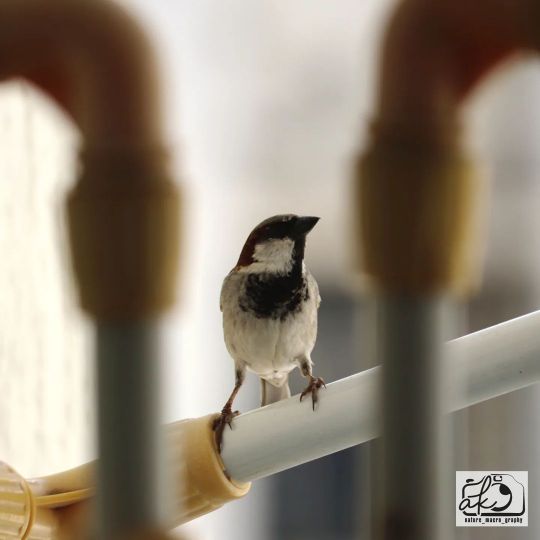
House Sparrow . Shot from Canon EOS 200D Mark II Aperture : f/5.6 Shutter Speed : 1/500 ISO : 250 . #canonindia #canoncameras #canonphotography #canonphoto #canonofficial #canoneos200dii #photography #justelimage #justgoshoot #indiapictures #smartphotography #photographyofficial #onephotography #housesparrow #sparrow #sparrows #birds #birdphotography #birdsofinstagram #birdsphotography #beautyofpixels07 (at Virar West) https://www.instagram.com/p/ClF6qDIDrh3/?igshid=NGJjMDIxMWI=
#canonindia#canoncameras#canonphotography#canonphoto#canonofficial#canoneos200dii#photography#justelimage#justgoshoot#indiapictures#smartphotography#photographyofficial#onephotography#housesparrow#sparrow#sparrows#birds#birdphotography#birdsofinstagram#birdsphotography#beautyofpixels07
6 notes
·
View notes
Photo
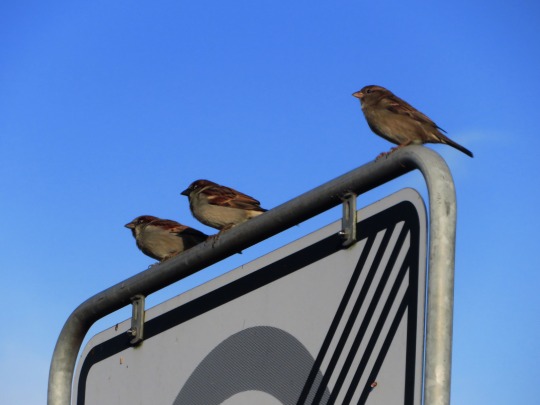
Haussperlinge | House sparrows
Passer domesticus
2 notes
·
View notes
Photo

Spatzi by Hobbyknipsel https://flic.kr/p/2nQxm6w
3 notes
·
View notes
Text


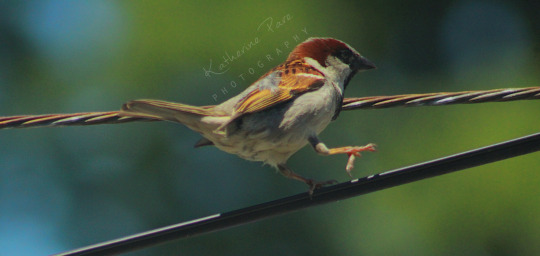
house sparrows
katherine pare - 2021
4 notes
·
View notes
Photo

When I 1st saw this bird fly into the bushes, I got really excited, because I thought it was a new lifer of some sort. Then it started feeding through an opening and I was able to get clear photos. I started noticing the House Sparrows feeding in the same area. My excitement calmed down, because I realized it was basically a House Sparrow that lacked color on the head, upper back and neck area. I kind of got back excited about getting a photo of this odd color House Sparrow though. 😄 #birdphotography #bird_captures #raw_birds #massaudubon #best_birds_of_world #birds_illife #birdsofinstagram #best_birds_photography #audubonsociety #nature_worldwide_birds #birdingphotography #sparrowappreciationsociety #total_birds #housesparrow #yourshotphotographer #global4nature #kings_birds #planetbirds #your_best_birds #eye_spy_birds #nuts_about_birds #bird_brilliance #ip_birds #birds_adored #dailybirdpix #bbcearth #allaboutbirds #best_birds_of_ig #strangerthings #birdinginmassachusetts (at Arnold Arboretum of Harvard University) https://www.instagram.com/p/CkgBQM1OsBV/?igshid=NGJjMDIxMWI=
#birdphotography#bird_captures#raw_birds#massaudubon#best_birds_of_world#birds_illife#birdsofinstagram#best_birds_photography#audubonsociety#nature_worldwide_birds#birdingphotography#sparrowappreciationsociety#total_birds#housesparrow#yourshotphotographer#global4nature#kings_birds#planetbirds#your_best_birds#eye_spy_birds#nuts_about_birds#bird_brilliance#ip_birds#birds_adored#dailybirdpix#bbcearth#allaboutbirds#best_birds_of_ig#strangerthings#birdinginmassachusetts
2 notes
·
View notes
Text
Bird Eggs White with Brown Spots: Nature's Artistic Masterpieces

Bird eggs, with their myriad shapes, sizes, and colors, are a marvel of nature's craftsmanship. Among the various patterns and hues that adorn these delicate treasures, one particular design stands out – eggs that are white with brown spots. In this article, we delve into the artistry of nature's canvas and explore the intriguing world of bird eggs featuring this exquisite coloration.
A Palette of Possibilities
Birds, with their incredible diversity, have evolved a stunning array of eggshell colors and patterns. While some lay eggs in solid colors or subtle pastels, others opt for striking designs. Eggs with brown spots on a white background fall into the latter category.
The Science Behind the Spots
The spots on bird eggs serve a dual purpose – camouflage and protection. The speckled pattern helps conceal the eggs from predators and blends into their surroundings. Additionally, the spots can vary in size and distribution, making each egg unique.
Who Lays Eggs with Brown Spots?
Numerous bird species around the world produce eggs with this captivating pattern. Some well-known examples include:
House Sparrow (Passer domesticus)
House Sparrows, often found in urban areas, lay small, white eggs adorned with tiny brown speckles. These spots help them blend into their nest environments. It is a common bird that is easily recognizable and widely found across many parts of the world.
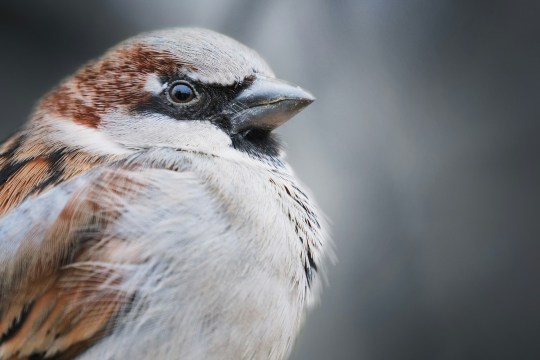
Here's some detailed information about them, especially focusing on their eggs:
Physical Description: House Sparrows are small birds, typically about 16 cm (6.3 inches) in length. They have a stout body, a rounded head, and a robust, conical beak. The males usually have a gray head and a black bib, while females and young sparrows are more of a brown and gray color with no black markings.
Habitat and Distribution: These birds are highly adaptable and can live in a variety of habitats, but they are most commonly found in urban and suburban areas. Originally native to parts of Europe and Asia, they have been introduced to many other parts of the world, including North America, Australia, and Africa.
Behavior and Diet: House Sparrows are known for their sociable nature. They often gather in large flocks and can be seen feeding together. Their diet mainly consists of seeds and grains, but they are opportunistic feeders and will also eat insects and scraps of human food.
Breeding and Nesting: House Sparrows are known for their versatility in nesting. They often build their nests in the nooks and crannies of houses, as well as in trees and bushes. The nests are made from grass, feathers, paper, and other materials.
Eggs: Regarding their eggs, House Sparrows typically lay white eggs with brown spots. The size of the egg is about 20 mm x 15 mm (0.79 inches x 0.59 inches). A typical clutch consists of 3 to 5 eggs.
Incubation and Fledging: The incubation period for House Sparrow eggs is about 10 to 14 days, and it's usually the female who incubates the eggs. The hatchlings are altricial, meaning they are born blind and without feathers. Both parents feed the chicks, and they fledge (leave the nest) about 14 to 16 days after hatching.
Conservation Status: Although House Sparrows are abundant and often considered pests in many areas due to their adaptability and large populations, in some parts of the world, notably parts of Europe, their numbers have been declining due to changes in urban environments and farming practices.
House Sparrows play an interesting role in the ecosystems they inhabit, often influencing local bird populations and competing with native species. Their ability to thrive in human-altered landscapes makes them one of the most recognizable bird species around the world.
Eastern Bluebird (Sialia sialis)
Eastern Bluebirds, known for their stunning azure plumage, lay eggs with pale blue shells adorned with subtle brown markings. It is a small North American songbird, admired for its beautiful colors and sweet song.

Here are some detailed aspects about them:
Physical Description: Eastern Bluebirds are medium-sized, mostly ranging from 16 to 21 cm (6.3 to 8.3 inches) in length. They have a distinctive royal blue plumage on their back and head, and a rusty or brick-red color on their throat and breast. Females are less brightly colored than males, with more of a grayish tone mixed with blue and orange.
Habitat and Distribution: These birds are found in open country across eastern North America and south as far as Nicaragua. Habitats preferred by Eastern Bluebirds include fields and open areas with scattered trees, orchards, and suburban areas. They are often seen perching alone on wires or posts.
Behavior and Diet: Eastern Bluebirds are insectivorous and feed mainly on insects and other invertebrates. During the fall and winter, they shift more to eating small fruits and berries. They are known for hunting by dropping to the ground onto insects from a perch.
Breeding and Nesting: Eastern Bluebirds are cavity nesters. They often use abandoned woodpecker holes or nest boxes. The nests are built by females and are made of grass and sometimes pine needles and other plant materials.
Eggs: The eggs of the Eastern Bluebird are pale blue or, occasionally, white, without any spots. Each clutch usually contains about 4 to 5 eggs.
Incubation and Fledging: The female incubates the eggs for about 14 to 16 days. The young are altricial at birth, meaning they are blind and featherless. Both parents feed the chicks. The young fledge (leave the nest) approximately 15 to 20 days after hatching.
Conservation Status: The Eastern Bluebird was once in decline, due to habitat loss and competition for nesting sites with the House Sparrow and European Starling. However, conservation efforts, including the provision of nest boxes, have helped their numbers increase.
Eastern Bluebirds are often a symbol of happiness and cheerfulness in American culture. Their recovery from near-threatened status is a success story for conservationists and bird lovers. They continue to delight people with their presence and song in their native habitats.
Northern Mockingbird (Mimus polyglottos)
Northern Mockingbirds produce creamy-white eggs adorned with fine brown spots. Their intricate nests are often concealed within shrubs. It is a well-known and widely recognized bird species, particularly famous for its vocal abilities.

Here's some detailed information about the Northern Mockingbird:
Physical Description: Northern Mockingbirds are medium-sized birds, generally measuring about 23 to 28 cm (9 to 11 inches) in length. They have a slim, streamlined body, long legs, and a long tail. Their plumage is primarily gray and white. The wings have white patches which are visible in flight.
Habitat and Distribution: These birds are native to North America and can be found in the United States, Mexico, and parts of Canada. Northern Mockingbirds prefer open areas with sparse vegetation, including suburban and urban settings, parks, gardens, and forest edges.
Behavior and Diet: Known for their singing ability, male Northern Mockingbirds can sing over 200 different songs, including imitations of other birds and even mechanical noises. They are omnivorous, feeding on insects, berries, and seeds. They are often observed foraging on the ground.
Breeding and Nesting: Northern Mockingbirds are monogamous during the breeding season. They build nests using twigs, leaves, grass, and other materials, usually in shrubs or trees. The nest building is primarily done by the female.
Eggs: The eggs of the Northern Mockingbird are light blue or greenish, with brown spots. A typical clutch contains 2 to 6 eggs.
Incubation and Fledging: The incubation period lasts about 12 to 13 days, and it is the female that incubates the eggs. The young are altricial at birth. Both parents feed the chicks, and the young leave the nest about 11 to 12 days after hatching, though they are still cared for by the parents for some time after fledging.
Conservation Status: The Northern Mockingbird is listed as of Least Concern by the IUCN. It is a common species with a stable population trend. However, like many birds, they are affected by habitat loss in some areas.
The Northern Mockingbird's ability to mimic a vast array of sounds, along with its adaptability to various environments, makes it a fascinating and prominent bird in its natural habitat. Its cultural significance is notable, being the state bird of several U.S. states and a frequent subject in literature, music, and folklore.
European Starling (Sturnus vulgaris)
European Starlings lay eggs that are pale blue-green with small brown speckles. These cavity-nesting birds have adapted to various habitats.It is a small to medium-sized passerine bird that is notable for its iridescent plumage and its remarkable ability to mimic sounds.

Here's a detailed overview of the European Starling:
Physical Description: European Starlings are about 20 cm (8 inches) long and have a stout build. Their plumage is glossy and iridescent, featuring a range of colors from green to purple, depending on the light. In the winter, their feathers are tipped with white, giving them a speckled appearance, which changes to a more uniform glossy sheen in the summer. They have a pointed bill that is dark in winter and yellow in summer.
Habitat and Distribution: Originally native to Eurasia, European Starlings have been introduced to numerous other regions, including North America, Australia, New Zealand, South Africa, and elsewhere. They are highly adaptable and can thrive in a wide range of habitats, including urban areas, farmlands, and open woodlands.
Behavior and Diet: European Starlings are gregarious birds, often seen in large flocks. They are known for their aerial displays, especially before they roost in the evenings. Their diet is varied and includes insects, fruits, seeds, and human-provided scraps.
Breeding and Nesting: Starlings are cavity nesters, often occupying holes in trees, but also readily using nest boxes or gaps in buildings. The nests are made from grass, leaves, and twigs. They can be quite aggressive in securing nesting sites, often displacing other cavity-nesting birds.
Eggs: The eggs of the European Starling are pale blue or greenish-white and usually number between 4 and 6 per clutch.
Incubation and Fledging: The female incubates the eggs for about 12 days. The chicks are altricial, meaning they are born blind and featherless. Both parents feed the chicks, which fledge about 21 days after hatching but may remain dependent on their parents for a further 2 weeks.
Conservation Status: In its native range, the European Starling is considered of Least Concern by the IUCN, though there are indications of population declines in parts of Europe. In introduced regions, they are often considered pests due to their impact on native species and agriculture.
European Starlings are notable for their vocal mimicry, capable of imitating a wide variety of sounds, including the songs of other bird species, alarms, and machinery. Their adaptability to human-modified landscapes has contributed to their widespread presence and the complexities associated with their management in non-native regions.
The Evolutionary Advantage
The evolution of speckled eggs is a fascinating example of nature's ingenuity. The spots provide an evolutionary advantage by helping eggs blend into their surroundings, making them less conspicuous to potential predators.
Aesthetic Appeal
Beyond their functional role, eggs with brown spots captivate our imagination. They are nature's miniature masterpieces, offering a glimpse into the intricate design work that goes into each bird's reproductive process.
Conclusion
Bird eggs with a white background and brown spots are not only a testament to nature's artistry but also a marvel of adaptation. These exquisite patterns serve as both camouflage and protection for the fragile embryos within. As we marvel at the beauty of these eggs, let us also appreciate the remarkable evolutionary journey that has led to their creation, a testament to the intricate balance of life in the avian world.
FAQs
What bird lays white eggs with brown spots?
Various bird species, including House Sparrows and Eastern Bluebirds, lay white eggs with brown spots.
What are the brown spots on egg whites?
The brown spots on eggshells serve the dual purpose of camouflage and protection, helping eggs blend into their surroundings and evade predators.
What lays brown spotted eggs?
Numerous bird species worldwide produce brown spotted eggs, showcasing the diversity of avian reproduction.
Why do bird eggs have spots?
Bird eggs have spots to provide camouflage and protection, helping them avoid detection by potential predators and ensuring the survival of the species.
Read the full article
0 notes
Text

2023.04.23: Out in the Rain
1 note
·
View note
Photo

The HouseSparrow (Passer Domesticus) is the most widely distributed wild bird species in the world! 🐦
#wildpixar#naturelovers#wildlife#birdsofinstagram#birdfacts#naturefacts#wildfacts#birdwatching#birdlovers#birdphotography#birdlife#instabirds#passerdomesticus#housesparrow
0 notes
Photo
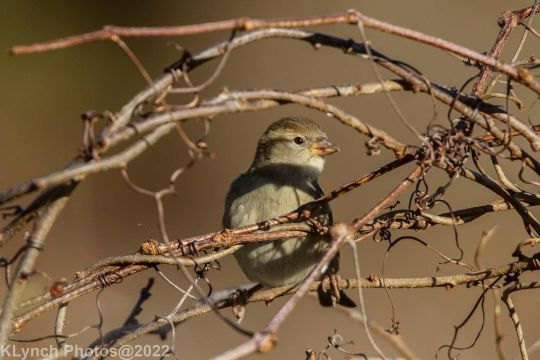
House Sparrow at Peterson Farm, Falmouth 12/08/22 #sparrow #sparrows #housesparrow #sparrowsofinstagram #bird #birds #birdsofinstagram #birdwatching #birdphotography #birding #birdingphotography #birdsofcapecod #birdstagram #nature #naturephotography #naturelovers #naturegram #nature_lovers #wildlifephotography #wildlife #wildlifeonearth #capecod #capecodbirds #capecodphotography #falmouth #falmouthma #petersonfarm #nature_perfection #naturelover #my_capecod_adventure_pictures More photos at https://capecodadventure.photos (at Peterson Farm Falmouth Ma) https://www.instagram.com/p/CmKtV6bPL1c/?igshid=NGJjMDIxMWI=
#sparrow#sparrows#housesparrow#sparrowsofinstagram#bird#birds#birdsofinstagram#birdwatching#birdphotography#birding#birdingphotography#birdsofcapecod#birdstagram#nature#naturephotography#naturelovers#naturegram#nature_lovers#wildlifephotography#wildlife#wildlifeonearth#capecod#capecodbirds#capecodphotography#falmouth#falmouthma#petersonfarm#nature_perfection#naturelover#my_capecod_adventure_pictures
1 note
·
View note
Photo

Scenes From My Walk - House Sparrow In A Bush Near My Home #ScenesFromMyWalk #SparrowFlying #HouseSparrow #Sparrows #SpeakForSparrows #SparrowsOfInstagram #Birds #Bird #BirdPhotography #Birding #BirdingPhotography (at Agua Fria, New Mexico) https://www.instagram.com/p/CndFUc8vVeW/?igshid=NGJjMDIxMWI=
#scenesfrommywalk#sparrowflying#housesparrow#sparrows#speakforsparrows#sparrowsofinstagram#birds#bird#birdphotography#birding#birdingphotography
2 notes
·
View notes
Photo

Howdy . . #vancouver #westend #urbanwildlife #birb #housesparrow https://www.instagram.com/p/ClF2KnNuDlO/?igshid=NGJjMDIxMWI=
0 notes
Photo

Meeting time #housesparrow #sparrow #varpunen #suomenlinnut #sparrowconservation #discoverfinland #finland4seasons #helsinkionline#myhelsinki #finland_photolovers #thisisfinland #ig_finland #loves_finland #helsinkiofficial #finland_today #visithelsinki #loves_united_finland #bestinhel#finnishmoments #finland_today #finlandonline #thisisfinland #myuusimaa #lovefinland #birdlifesuomi #visitfinlandjapan #outdoorfinland #helsinkilove #finlandwithlove #lintukuvaus #lintukuva #linnut_kuvahaaste (at Seurasaari) https://www.instagram.com/p/Cke8ZBBqKI8/?igshid=NGJjMDIxMWI=
#housesparrow#sparrow#varpunen#suomenlinnut#sparrowconservation#discoverfinland#finland4seasons#helsinkionline#myhelsinki#finland_photolovers#thisisfinland#ig_finland#loves_finland#helsinkiofficial#finland_today#visithelsinki#loves_united_finland#bestinhel#finnishmoments#finlandonline#myuusimaa#lovefinland#birdlifesuomi#visitfinlandjapan#outdoorfinland#helsinkilove#finlandwithlove#lintukuvaus#lintukuva#linnut_kuvahaaste
0 notes
Photo

Sparrow sitting on a branch https://youtu.be/NAJYqq-7Z48 #sparrowdrawing #sparrowbird #art #colourpencildrawing #realisticart #pencildrawing #colourpencils #bird #sparrowsofinstagram #birddrawing #sparrow #housesparrow #drawing #sparrowart #birdsofinstagram #birdstagram #birds_nature #artwork #pencilsketching #youtubeartvideo #littlebirds #birdsofig #subscribenow #realisticart #sketchbook #indian #pencilacademy #sketchdaily #drawingtutorial #artsketch https://www.instagram.com/p/CjUhFwuhiEx/?igshid=NGJjMDIxMWI=
#sparrowdrawing#sparrowbird#art#colourpencildrawing#realisticart#pencildrawing#colourpencils#bird#sparrowsofinstagram#birddrawing#sparrow#housesparrow#drawing#sparrowart#birdsofinstagram#birdstagram#birds_nature#artwork#pencilsketching#youtubeartvideo#littlebirds#birdsofig#subscribenow#sketchbook#indian#pencilacademy#sketchdaily#drawingtutorial#artsketch
0 notes
Text

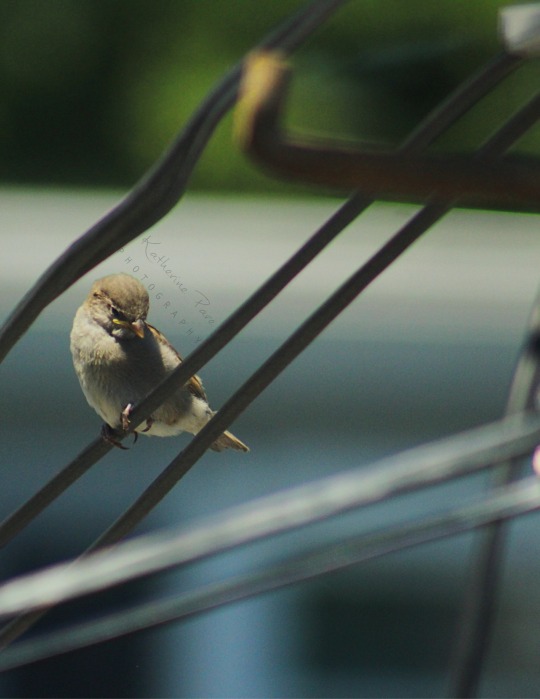

baby house sparrow
katherine pare - 2021
2 notes
·
View notes
Photo

Now showing at Chinery House Yard: Small Bird & Big Flower. #yeg #yegflora #yegfauna #sunflower #housesparrow (at Chinery House) https://www.instagram.com/p/CioAX0nPNl1/?igshid=NGJjMDIxMWI=
0 notes